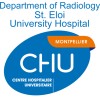
Goal Attainment Scaling in Upper Limb Spasticity Treatment
Ischemic StrokeHemorrhagic StrokePatients after stroke with upper limb spasticity treated with botulinum toxin-A (BTX-A) will be included in this two-part study. In the first part, goal attainment scaling and comprehensive assessment of motor functioning will be performed before BTX-A application and after two weeks. In the second part, the patients will be randomised into a test group performing prescribed regular exercise for two weeks and a control group exercising at their own discretion during the same period, whereby the patients' health-related quality of life will be assessed at the beginning and end of the two-week period.

HEMS for Mechanical Thrombectomy
Ischemic StrokeElapsed time from the onset of stroke symptoms to the point of revascularization is the key determinant of the optimal outcome of acute ischemic stroke. Pharmacological treatment is less effective if the thrombus occluding the artery is big enough and mechanical thrombectomy is required to gain recanalization. Mechanical thrombectomy can be done only in comprehensive stroke centres. There are 5 comprehensive stroke centres in Finland which causes regional inequality when it comes to reaching mechanical thrombectomy in a reasonable time limit. The aims of the study is to measure the effect of dispatching a helicopter emergency medical services unit on the treatment delays of a stroke patient with large vessel occlusion. The HEMS unit is dispatched to both: getting patient directly to the comprehensive stroke centre as well as to interfacility tranfers.

Evaluation of Functional Recovery of Patients With Acute Ischemic Stroke Treated by Thrombectomy...
Acute Ischemic StrokeThe management of cerebral infarctions (CI) is a real public health issue. The French National Authority for Health recommends Mechanical Thrombectomy (MT) either in combination with Intravenous Thrombolysis (IVT), or alone, after failure of IVT or in case of contraindication to IVT, within 6 hours of the onset of symptoms. The objective is to determine the factors predicting good functional recovery at 3 months in order to establish the typical profile of the "good responder" patient to MT and to evaluate functional recovery at 3 and 12 months (mRS ≤ 2) according to the modality of MT (depending on whether it is performed during the day or at night), the age of the patients, the equipment used for MT, the type of anaesthesia, as well as the impact of the metrics from the radiological evaluation in the patient's management. patient management.

Thrombolysis Combined With Edaravone Dexborneol on Hemorrhagic Transformation for Acute Ischemic...
StrokeIschemicTo explore the safety and efficacy of edaravone dexborneol for the treatment of acute ischemic stroke patients who received thrombolysis.

Predictive Study of Serum Endocan for Hemorrhagic Transformation After Reperfusion Therapies in...
Acute Ischemic StrokeStroke is the second largest cause of death globally after ischemic heart disease.Of the total number of prevalent strokes, 84.4% are ischemic. Reperfusion therapy is the most important treatment for acute ischemic stroke (AIS) ,including intravenous thrombolysis and/or endovascular treatment.However,the most serious and common complication with reperfusion therapy is hemorrhage transformation(HT),which significantly increases disability and mortality. The fundamental mechanism leading to post-stroke HT is the disruption of the blood brain barrier(BBB) and increase of permeability.Endocan plays a critical role in vascular inflammatory responses by enhances the production of pro-inflammatory cytokines by endothelial cells,the expression of adhesion molecules such as inter-cellular adhesion molecule-1(ICAM-1) and vascular cell adhesion molecule-1(VCAM-1),and the adhesion of leukocytes to endothelial cells. Endocan significantly decreases levels of zonula occludens(ZO-1) and occludin which are tight junction proteins that play major roles in the maintenance of vascular barriers. Endocan could induce vascular endothelial growth factor-A(VEGF-A) and facilitate the binding of VEGF-A to its receptor(VEGFR-2) to enhanced endothelial permeability.Therefore,endocan is a reliable biomarker of endothelial dysfunction, which may be associated with disruption of the BBB. In this context, the investigators hypothesized that elevated pretreatment serum endocan levels might be independently associated with HT after reperfusion therapy in the acute phase of ischemic stroke. Serum endocan,ICAM-1,VCAM-1 and matrix metalloproteinase-9(MMP-9) levels will be determined by enzyme-linked immunosorbent assay(ELISA) in blood samples obtained at baseline (pretreatment) and at 12,24 hours after reperfusion therapy in patients with acute stroke and in healthy subjects.In the present study,the investigators attempt to investigate whether high levels of endocan are associated with HT in patients who received reperfusion therapy.In addition,the investigators explore the association between serum endocan and early neurological deterioration and unfavourable short-term prognosis.

Optimal Delay Time to Initiate Anticoagulation After Ischemic Stroke in Atrial Fibrillation
StrokeTitle: Optimal Delay Time to Initiate Anticoagulation after Ischemic Stroke in Atrial Fibrillation (START): a pragmatic, adaptive randomized clinical trial. Primary Objective: • To determine the optimal time to initiate anticoagulation with a Non-Vitamin K Oral Anticoagulant (NOAC) after ischemic stroke in patients with non-valvular atrial fibrillation. Secondary Objectives: To compare the rates of primary adverse outcomes in a per protocol analysis To compare 30 day clinical outcomes by the modified Rankin scale among the time-to-treatment groups To compare 90 day clinical outcomes by the modified Rankin scale among the time-to-treatment groups To explore the optimal timing in subgroups of age, sex, outcome category, and NOAC choice

Cohort of Ischemic STROKE Patients
Ischemic StrokeIschemic stroke is the first cause of acquired disability of the adult, the second cause of dementia and the third cause of death in the industrialized countries, what constitutes à major public health issue. Stroke is characterized by a cerebral parenchymal lesion due to an ischemic mechanism (85% of the cases) or hemorrhagic mechanism (15%). For a long time, the only approved treatment was the intravenous thrombolysis (rt-PA). Recently, thrombectomy has proven its superiority in this pathology. Cohorts of patients with stroke are rare but can be very valuable by their clinical, laboratory and imaging well documented. They are the source of new hypotheses for research or interventions as well as the quality of care assessment tool. The main objective of this project is to identify new markers: biological and imaging, treatment response and prognosis after ischemic stroke. Secondary objectives of the HIBISCUS-STROKE cohort are to establish a clinical database, completed by biological samples and by imaging data that can be used in the following areas: Descriptive epidemiology of ischemic stroke and cerebral reperfusion, Pharmacoepidemiology and treatments observatory: safety, efficacy, indication of treatment in real life, costs Assessment of the long-term effect of the treatment on the occurrence of disability, stroke recurrence and death, Quality of life and personal, familial, professional and social consequences of stroke, Research of new diagnostic and prognostic biomarkers, Research projects.

Endovascular Treatment in Ischemic Stroke Follow-up Evaluation
StrokeAcuteStudy like register with biomarkers samples for patient experiencing acute ischemic stroke, to assess clinical outcomes and different factors that may affect the clinical outcomes.

Population-based Brest Stroke Registry
Cerebral (CVAs)Ischemic Cerebrovascular Accident7 moreThe registry is the main objective exhaustive list of cases validated stroke brain on a geographical area defined to calculate an incidence.

Study of the Therapeutic Effects of Cortical Autograft Implantation in Patients With Cerebral Ischemia...
Ischemic StrokeBrain lesions in the adult have dramatic consequences, because the spontaneous capacity of the brain to functionally recover is limited. Besides existing rehabilitative therapeutic approaches (e.g. physiotherapy), several lines of research aim at developing treatments to promote and refine brain plasticity to enhance functional recovery following brain injury. This pilot clinical study aims at enrolling subjects victim of a stroke with neuronal destruction leading to a disabling motor deficit. Usually these patients benefit from intensive neurorehabilitation which allows them to progress up to a certain point but when their recovery plateau is reached; current medicine is disarmed and no effective treatment allows, to date, to improve further their performance. This monocentric pilot study aims at evaluating the feasibility and safety of Autologous Neural Cell Ecosystems (ANCE), which is a cortical autograft intended to be used on stroke patients, for the replacement of motor neurons destroyed during an ischemic stroke.
